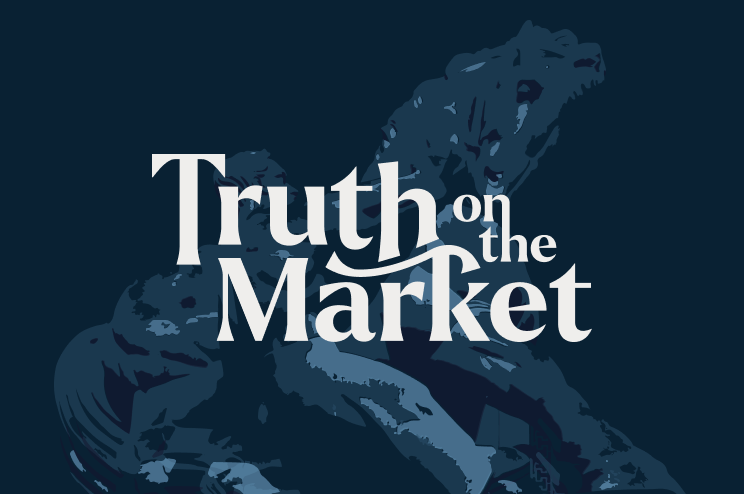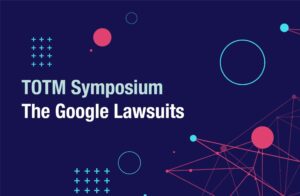Showing results for: “Valid C1000-170 Study Materials 🕗 C1000-170 Latest Exam Answers 🏮 Trusted C1000-170 Exam Resource 🦍 Search on 【 www.pdfvce.com 】 for 【 C1000-170 】 to obtain exam materials for free download 🐀Valid C1000-170 Dumps Demo”
New Paper Reveals “Stealth” Consolidation But Competitive Effects Remain Hidden
Thomas Wollmann has a new paper — “Stealth Consolidation: Evidence from an Amendment to the Hart-Scott-Rodino Act” — in American Economic Review: Insights this month. Greg Ip included this research in an article for the WSJ in which he claims that “competition has declined and corporate concentration risen through acquisitions often too small to draw ... New Paper Reveals “Stealth” Consolidation But Competitive Effects Remain Hidden
The FTC’s Errors in 1-800 Contacts
In an amicus brief filed last Friday, a diverse group of antitrust scholars joined the Washington Legal Foundation in urging the U.S. Court of Appeals for the Second Circuit to vacate the Federal Trade Commission’s misguided 1-800 Contacts decision. Reasoning that 1-800’s settlements of trademark disputes were “inherently suspect,” the FTC condemned the settlements under ... The FTC’s Errors in 1-800 Contacts
Can Experts Structure Markets? Don’t Count On It.
Complexity need not follow size. A star is huge but mostly homogenous. “It’s core is so hot,” explains Martin Rees, “that no chemicals can exist (complex molecules get torn apart); it is basically an amorphous gas of atomic nuclei and electrons.” Nor does complexity always arise from remoteness of space or time. Celestial gyrations can be ... Can Experts Structure Markets? Don’t Count On It.
GDPR After One Year: Costs and Unintended Consequences
GDPR is officially one year old. How have the first 12 months gone? As you can see from the mix of data and anecdotes below, it appears that compliance costs have been astronomical; individual “data rights” have led to unintended consequences; “privacy protection” seems to have undermined market competition; and there have been large unseen ... GDPR After One Year: Costs and Unintended Consequences
Balancing competition and innovation in the drug industry: An evaluation of current proposals.
Last week the Senate Judiciary Committee held a hearing, Intellectual Property and the Price of Prescription Drugs: Balancing Innovation and Competition, that explored whether changes to the pharmaceutical patent process could help lower drug prices. The committee’s goal was to evaluate various legislative proposals that might facilitate the entry of cheaper generic drugs, while also ... Balancing competition and innovation in the drug industry: An evaluation of current proposals.
A Bargaining Model v. Reality in FTC v. Qualcomm: A Reply to Kattan & Muris
Introduction In a recent article[1] Joe Kattan and Tim Muris (K&M) criticize our article[2] on the predictive power of bargaining models in antitrust, in which we used two recent applications to explore implications for uses of bargaining models in courts and antitrust agencies moving forward. Like other theoretical models used to predict competitive effects, complex bargaining models ... A Bargaining Model v. Reality in FTC v. Qualcomm: A Reply to Kattan & Muris
In Apple v Pepper, SCOTUS leaves home without its Amex
It might surprise some readers to learn that we think the Court’s decision today in Apple v. Pepper reaches — superficially — the correct result. But, we hasten to add, the Court’s reasoning (and, for that matter, the dissent’s) is completely wrongheaded. It would be an understatement to say that the Court reached the right ... In Apple v Pepper, SCOTUS leaves home without its Amex
An Evidentiary Cornerstone of the FTC’s Antitrust Case Against Qualcomm May Have Rested on Manipulated Data
The courtroom trial in the Federal Trade Commission’s (FTC’s) antitrust case against Qualcomm ended in January with a promise from the judge in the case, Judge Lucy Koh, to issue a ruling as quickly as possible — caveated by her acknowledgement that the case is complicated and the evidence voluminous. Well, things have only gotten more ... An Evidentiary Cornerstone of the FTC’s Antitrust Case Against Qualcomm May Have Rested on Manipulated Data
Is Amazon Guilty of Predatory Pricing?
In 2014, Benedict Evans, a venture capitalist at Andreessen Horowitz, wrote “Why Amazon Has No Profits (And Why It Works),” a blog post in which he tried to explain Amazon’s business model. He began with a chart of Amazon’s revenue and net income that has now become (in)famous: Source: Benedict Evans A question inevitably followed ... Is Amazon Guilty of Predatory Pricing?
The ICANN Board’s Important Test of Independence: .Amazon
One of the main concerns I had during the IANA transition was the extent to which the newly independent organization would be able to behave impartially, implementing its own policies and bylaws in an objective and non-discriminatory manner, and not be unduly influenced by specific “stakeholders”. Chief among my concerns at the time was the ... The ICANN Board’s Important Test of Independence: .Amazon
Deadweight loss from no monopoly
The once-mighty Blockbuster video chain is now down to a single store, in Bend, Oregon. It appears to be the only video rental store in Bend, aside from those offering “adult” features. Does that make Blockbuster a monopoly? It seems almost silly to ask if the last firm in a dying industry is a monopolist. ... Deadweight loss from no monopoly
What Zoom can tell us about network effects and competition policy in digital markets
Zoom, one of Silicon Valley’s lesser-known unicorns, has just gone public. At the time of writing, its shares are trading at about $65.70, placing the company’s value at $16.84 billion. There are good reasons for this success. According to its Form S-1, Zoom’s revenue rose from about $60 million in 2017 to a projected $330 ... What Zoom can tell us about network effects and competition policy in digital markets





